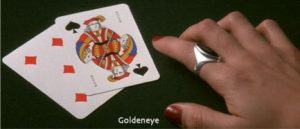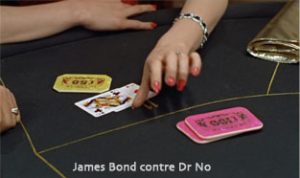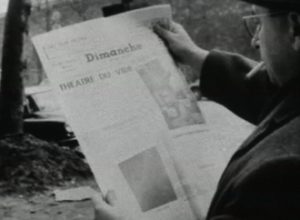
The singularity of technology lies perhaps in its an aura of objectivity and timelessness whereas reality demonstrates just the opposite. Like everything else, it complies with the dictates of history and obeys conventions. André Gunthert goes back over some of the arguments that might bid us to rejoin the land of history, the land formalism’s supporters had left behind. Using some well-known examples to which we had never truly paid attention from the standpoint of technology, he reminds us that every recording operation–perceived as transparent at the moment it is carried out–has a tendency to become opaque as it recedes in time. In fact, there is no end to the redefinition of technology, as there is no end to the variations in taste, by nature temporary, that depend on this constant redefinition. Nothing takes place without a minimum of historical consensus, the most lasting of which indeed assures all possible aspects of immediacy and transparency.
Christian Walter extends to the economy this reflection on the pseudo neutrality of technology. What he shows us is that a market is dependent on its recording. The recent stock-market crisis would indeed have confirmed him in his insistence on the nature of the apprehension of uncertainty in the economic and financial worlds, where probabilistic modelings dating from the 1960s rest on statistical conceptions that are themselves inherited from the nineteenth century. According to Walter, the practices that follow therefrom are unsuited to take into consideration some of today’s major phenomena: spasms of opinion and liquidity crises. Arguing for a “clear image” of uncertainty, he sheds light on the role representation plays in economics as well as elsewhere.
Each in his own way and on the basis of very different objects of study, both authors demonstrate how powerful is the role technology plays. Deceptively innocent, technology succeeds insofar as the viewer does not desire to know what lurks behind its filters.
Laurence Bertrand Dorléac
Seminar of December 13th 2007

Fig. 1 and 2. Comparison of chromatic atmospheres. Top: Doctor No (Terence Young, 1962); Above: Goldeneye (Martin Campbell, 1995), video stills from the 2007 MGM DVD.
A recent work entitled Photography Theory attempts to take stock of the changes that have occurred in how this medium is conceived [ref]See James Elkins, ed., Photography Theory (New York and London: Routledge, 2007).[/ref]. The main editor, James Elkins, has solicited texts from all the authors who count in visual studies. And yet, despite its list of forty contributors, the essential feature of this work remains the confrontation between Rosalind Krauss and Joel Snyder.
What could be more normal? Examining photographic theory boils down today to discussing the central concept of indexicality, which was first proposed by Krauss in 1977. In a still-famous article where she sought to characterize the new artistic practices of the 1970s, this art critic proposed the following definition, “Every photograph is the result of a physical imprint transferred by light reflections onto a sensitive surface. The photograph is thus a type of icon, or visual likeness, which bears an indexical relationship to its object.” [ref]Rosalind Krauss, “Notes on the Index: Seventies Art in America (1),” in October, 3 (1977): 75. Translated into French by J.-P. Criqui as “Notes sur l’index,” in L’Originalité de l’avant-garde et autres mythes modernistes (Paris: Macula, 1993), p. 69.[/ref]

While wishing to counter the pictorial hegemony of formalist discourse by importing the model of photography onto the terrain of art, Krauss remained faithful to the modernist strategy of characterizing a medium through a look at its specific means. By sealing this presentation with the notion of index, which was borrowed from Peirce, she affixed to the formalist base–the crucible of American art history–the label of semiotic theory, doing so at a time when that theory was the height of fashion. Never had photography had at its disposal so sophisticated and seductive a concept, one that would continue to be discussed and extended in numerous works for two decades[ref] See, in particular, Katia Schneller, “Sur les traces de Rosalind Krauss. La réception française de la notion d’index, 1977-1990,” in Études photographiques, 21 (December 2007): 123-43. [Translator: In the French, “likeness” is translated as représentation.][/ref].
Among all the intellectuals whose have specialized in this medium, but a single one has reaffirmed his constant disagreement with photography’s reductio ad indicem. He is the art historian Joel Snyder. In Photography Theory, Krauss herself designates him as her favorite opponent, and their dialogue starts up again in several places in this book. For Snyder, the ontological approach on which the indexical argument rests can at the very most provide an idealized point of reference for a belief in photographic objectivity, but it is irrelevant for the description of images. This art historian insists, to the contrary, on the conventional character of photographic representation, which is to be likened to the working out of perspective. According to him, there exists no direct relation between the object and the photographic image; on the contrary, there exists a complex relationship made up of mutually entangled mediations.
Krauss answers with a quotation drawn from Roland Barthes’s Camera Lucida:
This argument is futile: nothing can prevent the Photograph from being analogical; but at the same time, Photography’s noeme has nothing to do with analogy (a feature it shares with all kinds of representations). The realists, of whom I am one and of whom I was already one when I asserted that the Photograph was an image without code . . . the realists do not take the photograph for a “copy” of reality, but for an emanation of past reality: a magic, not an art [ref]Roland Barthes, Camera Lucida: Reflections on Photography, trans. Richard Howard (New York: Hill and Wang, 1981), p. 88 (cited in Rosalind Krauss, “Introductory Note,” Photography Theory, p. 126).[/ref].
Despite the examples he provides, Snyder fails to win over others. And yet it is he who is right. Why, over the thirty years this debate has lasted, has his position remained so isolated? The quality of his arguments is not at issue. The conventional character of photography, which goes against our common intuition, is one of the most difficult characteristics to highlight.
Professional photographers know quite well that, by changing lenses or films, they have at their disposal, at the moment the shot is taken, a substantial margin of maneuver that allows them to change the appearance, the geometry, or the colors of a scene. But the general public, which has little grasp of such adjustments, is left in the dark about those alternatives. We do not like to think that the image depends on a series of filters whose parameters, which can be modified, have quietly been imposed upon us by engineers or by marketers. Photography’s objectivity is a powerful credo; we prefer to grant, without discussion, this medium’s transparency.
And yet, there exists simple characteristic, one well known to all, that strikingly demonstrates the conventional character of visual recording. We catch a glimpse of it quite often when, for example, on television we watch an old film–such as Gérard Oury’s Don’t Look Now–We’re Being Shot At (1966) or Alfred Hitchcock’s North By Northwest (1959). This is but a fleeting awareness, quickly forgotten as we get caught up in the drama, but one which can usually be discerned during the first few minutes or seconds of the film. What we inadvertently perceive during this brief space of time is the difference in chromatic atmospheres between the film and our ordinary visual environment.
Though fleeting, this experience is nonetheless perfectly familiar to us. For, it is the one that helps us to identify a film’s genre and to situate in time images we catch a glimpse of while searching for something entertaining to watch as we surf from one channel to another.
This difference in atmospheres can be highlighted, for example, with the use of DVD recordings of the James Bond series, which were recently released by Metro Goldwyn Mayer in an entirely remastered boxed set. Within this homogeneous and relatively stereotypical whole stretching over forty-five years, it is easy to identify and to compare similar situations. Sean Connery’s first appearance as James Bond, in Terrence Young’s Doctor No (1962), takes place in a casino, at the baccarat table. Comparison with a corresponding scene in Martin Campbell’s Goldeneye (1995) allows one to show clearly the differences in color of the respective props, costumes, and flesh tones.
Color perception, as one knows, is a phenomenon that is in large part subjective and cultural. But differences in film’s chromatic atmospheres form a relative scale whose objective character is easily demonstrable. When, for OSS 117: Cairo, Nest of Spies, Michel Hazanavicius wished to give his 2006 film the look of a Sixties remake as a kind of a nod to the first OSS 117 films directed by André Hunebelle starting in 1963, he deliberately played on the treatment of chromatic effects and artificially created a clearly perceptible air of quaintness.
How is this phenomenon to be analyzed? Doctor No was filmed in Technicolor, an already old technology at the moment of shooting that had assured Hollywood’s supremacy in the world of cinema since the 1930s, whereas Goldeneye was shot in Rankcolor, a variant of Kodak’s Eastmancolor, which began to enjoy widespread use in the 1950s. Because this video collection has been rebalanced, the perceptible difference in chromatic atmospheres does not stem from an aging of the media themselves but is, rather, the manifestation of the provisional character of a consensus about the conditions for the restitution of reality within a cinematographic context. In other words, it manifests the conventional character of visual recording.
This same effect is also present in the world of photography. As consultation of any extended album of family photos will show, we perceive and identify differences in appearance as information about the temporal situation of the image. This well-known characteristic–which, for example, allows experts to date an old photograph [ref]See now Henry Wilhelm and Carol Brower, The Permanence and Care of Color Photographs (Grinnell, Iowa: Preservation Publishing Company, 1993).[/ref] –is never analyzed in terms of what it actually shows. It nevertheless testifies, in the clearest way possible, to the fact that a recording operation, which is always perceived as transparent at the moment it is performed, will become more and more opaque as it recedes in time and as a new consensus, which makes the previous one appear dated, is established.
This process may be noted in the latest progress made in digital photography: such changes are endless, for there is no objective limit to the redefinition of sensitometric balance, which itself is a compromise between a given set of technological conditions and passing tastes. Even though our perception of the phenomenon is clearer the further back in time one goes, this perception does indeed adapt and become more refined in pace with developments in technologies for the restitution of visual reality. Moreover, there will come a moment when a similar veil will fall upon photographs from today’s digital reflex cameras; those photos will then appear to us as just as fleeting and easily situated in time as an Ektacolor print from the 1970s.
The opacification of the medium is the simplest and most apparent manifestation of the technological character of recording operations. Everyone has had this experience. One need but draw the lesson therefrom. In this way, we can reformulate Krauss’s first sentence as follows: Every photograph is the result of a physical imprint transferred by light reflections onto a sensitive surface and of a historical consensus about the conditions for its restitution. Photography is therefore the type of visual representation that has a perpetually revamped relationship with its object, thereby guaranteeing the features of immediacy and transparency that are in keeping with its cultural legacy.
Bibliography
Barthes, Roland. Camera Lucida: Reflections on Photography (1980). Trans. Richard Howard. New York: Hill and Wang, 1981.
Elkins, James. Ed. Photography Theory. New York and London: Routledge, 2007.
Krauss, Rosalind. “Notes on the Index: Seventies Art in America (1),” October, 3 (1977). Translated into French by J.-P. Criqui as “Notes sur l’index,” in L’Originalité de l’avant-garde et autres mythes modernistes. Paris: Macula, 1993.
Schneller, Katia. “Sur les traces de Rosalind Krauss. La réception française de la notion d’index, 1977-1990.” Études photographiques, 21 (December 2007): 123-43.
The art historian, researcher, and publisher André Gunthert is an associate professor at Paris’s École des Hautes Études en Sciences Sociales, where he created the Laboratory of Contemporary Visual History (LHIVIC). Founder and editor of the review Études photographiques, Gunthert is the author of numerous articles as well as several works devoted to the history of “image practices.” In particular, he has edited, along with Michel Poivert, L’Art de la photographie (Paris: Citadelles-Mazenod, 2007). Gunthert is currently pursuing research on new uses of digital images. His recent works may be consulted on his blog: www.arhv.lhivic.org




